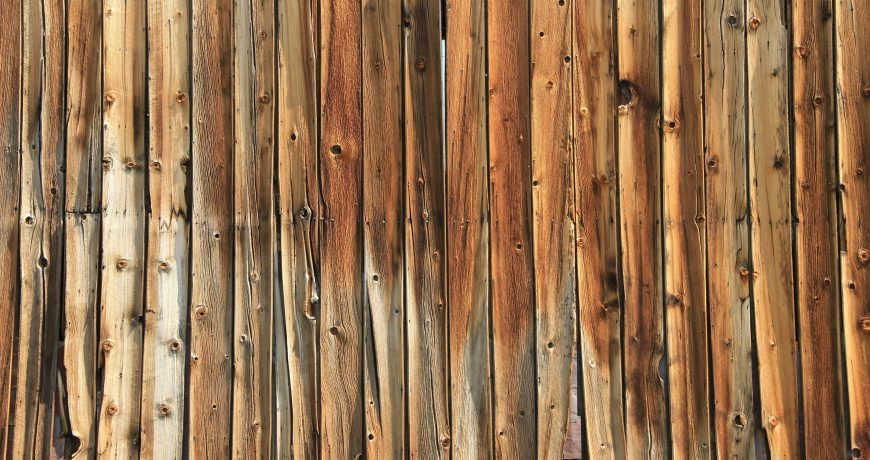Pressure Treated vs Cedar Fence: What’s the Difference and Which is Better?
Fences are essential to maintain privacy, enhance security, safeguard loved ones, and even increase your property’s value. The material you select influences how well your fence serves its purpose, though.
Options like wood fence vs chain link exist, but when selecting your fencing material, the classic debate is often choosing between pressure treated vs cedar fence.
Both materials offer advantages, but cedar often comes out on top for its winning combination of natural beauty, long-term durability, and minimal upkeep. We’ll dive deeper into its advantages below and show you why Big Tex is the premier choice for cedar fence pickets in Austin and San Antonio!
What’s the Difference Between Cedar and Pressure Treated Wood Fence?
To make the best decision between a pressure treated vs cedar fence, it’s crucial to understand their distinct features. Let’s explore what makes each fencing material unique before comparing and contrasting them side by side.
Overview of Cedar Fencing
If you’re exploring cedar or pressure treated fence options, cedar’s inherent characteristics make it a tempting choice. Naturally rich, warm tones and distinctive grain patterns give a cedar fence a visually stunning presence, enhancing any property’s aesthetic.
This is a key consideration when looking at the difference between cedar and pressure treated wood fence appearance options. You want a fence that doesn’t just serve a functional purpose but also looks stunning doing its job.
Cedar also contains natural oils, including thujaplicin, that act as preservatives. These oils give cedar an advantage when determining if cedar or pressure treated is better for fence longevity, as they provide built-in resistance to rot, decay, and insect infestations.
A cedar fence lifespan can easily last up to 40 years with proper care, surpassing many other fencing materials. Unlike pressure-treated options, painting cedar fence pickets is rarely necessary, as its inherent beauty is a primary advantage over other materials.
Cedar is renowned for its remarkable dimensional stability, resisting warping, twisting, or cupping to ensure it retains its sleek looks over time. And when the time comes, cedar fence restoration isn’t going to break the bank.
Many homeowners appreciate the fresh, woodsy aroma that cedar exudes, adding another layer to the sensory experience of their outdoor spaces.
Furthermore, responsibly sourced cedar can be the more environmentally conscious choice in the pressure treated vs cedar fence debate, a factor that weighs on many homeowners’ minds.
Overview of Pressure Treated Fencing
Pressure-treated wood, typically Southern Yellow Pine, undergoes a specific process to bolster its resilience against the elements.
Pressure-treated wood is infused with preservatives under high pressure, a chemical treatment essential for ensuring its lifespan competes against cedar or pressure treated fence options. Untreated pine would quickly fall victim to rot, decay, and insects, making this process indispensable.
A significant advantage of pressure-treated wood is its affordability upfront, making it a budget-friendly contender when considering the cost of cedar fence vs pressure treated choices.
While cedar’s natural beauty is prized, pressure-treated wood offers versatility by readily accepting stains and paints, allowing it to match any home’s aesthetic or stand out boldly. This flexibility is a key factor when examining cedar or pressure treated fence choices.
Lastly, pressure-treated wood’s wide availability at lumberyards and home improvement stores makes it an easily accessible solution when comparing cedar or pressure treated fence options.
Pressure Treated vs Cedar Fence: Which is Better For Your Property?
Deciding between cedar or pressure treated fence depends on several key factors. Understanding the unique characteristics of each material will help you determine the best choice for enhancing your property’s aesthetics, security, and long-term value.
Aesthetics and Design Versatility
When considering the difference between cedar and pressure treated wood fence options, the aesthetic appeal plays a significant role in your decision.
If you desire the best fence for privacy and security along with inherent beauty, cedar is the clear winner. Its warm, rich tones and striking grain patterns effortlessly elevate the look of any property, adding timeless elegance that complements a variety of architectural styles.
While pressure-treated wood lacks cedar’s natural charm, it does offer the flexibility of being easily stained or painted. This allows you the freedom to customize its color to match your home’s exterior or to create a bold statement that sets your property apart.
Cost Considerations
Cost is another crucial factor when choosing between pressure treated vs cedar fence options.
Pressure-treated wood generally boasts a lower upfront cost, making it a budget-friendly option for many homeowners.
While cedar might have a higher initial price tag, its exceptional longevity and minimal maintenance requirements often make it a better long-term investment when considering the cost of cedar fence vs pressure treated alternatives over time.
Longevity and Durability
With its natural resistance to rot, decay, and insect infestations, cedar stands the test of time. Moreover, cedar’s remarkable dimensional stability ensures it resists warping, twisting, and cupping that often plague pressure-treated wood over the years.
While chemical treatments protect pressure-treated wood to some extent, it remains more susceptible to these damaging elements, potentially shortening its lifespan.
Maintenance Needs
Maintenance is another factor when evaluating cedar or pressure treated fence options.
Cedar stands out for its simplicity – periodically cleaning cedar fence and occasionally sealing or staining (if desired) can preserve its vibrant beauty for years to come. See our guide on when to stain a new cedar fence.
In contrast, pressure-treated wood fences often require regular staining or painting to maintain both their appearance and their protection against the elements. This translates to higher long-term maintenance costs for pressure-treated fences.
Installation Requirements
While the basic installation steps between pressure treated vs cedar fence might seem similar, professional installation is crucial to ensure your fence’s beauty and longevity.
Experienced installers understand the specific differences between handling cedar and pressure-treated wood. They’ll use the correct cedar fence nails, spacing, and techniques to prevent warping, splitting, and other issues that can shorten your fence’s lifespan.
Professionals assess your property’s terrain, soil type, and local regulations to tailor the installation for long-term stability. This is important for any fence, but especially if you’re considering a cedar vs redwood fence, where proper installation helps maximize the unique benefits of either material.
A professionally installed fence often qualifies for warranties, offering reassurance that any potential issues will be addressed. This can add value when considering the overall cost of cedar fence vs pressure treated alternatives.
Environmental Factors
For some homeowners choosing between cedar or pressure treated fence, choosing the material with minimal environmental impact is a priority.
Responsibly sourced cedar can be a more environmentally conscious choice. This is due to the contrast between cedar’s natural properties and the chemicals used to treat pressure-treated wood, which can have some environmental impact.
So, is Cedar or Pressure Treated Better For a Fence?
Is cedar or pressure treated better for fences? What’s it going to be for you? While pressure-treated wood holds advantages in affordability and some design flexibility, cedar often emerges as the superior choice for most homeowners.
- Unmatched Beauty: Cedar’s natural aesthetic appeal adds value and timeless elegance to any property.
- Exceptional Durability: With proper care, a cedar fence can last decades, often exceeding the lifespan of pressure-treated alternatives.
- Minimal Maintenance: Simple cleaning and occasionally using cedar fence sealer or staining keep cedar looking its best.
- Environmental Considerations: Responsibly sourced cedar can be a more sustainable choice.
Get Cedar Fence Pickets at Big Tex and Discover the Benefits of Cedar Firsthand!
Now that you understand the advantages of cedar, where to buy cedar fence pickets is likely the next question on your mind.
Explore Viking Fence’s premium Western Red Cedar options through Big Tex and elevate your property’s aesthetic while investing in long-term value.
Not convinced? Here’s why homeowners choose our cedar:
- Unmatched Flexibility: Viking Fence stands as Austin’s only fence company with a dedicated remanufacturing facility. This means we can resaw and custom cut your cedar fence pickets to meet your unique specifications, ensuring the perfect fit and a truly custom look.
- Superior Stability: Cedar’s low shrinkage factor and exceptional dimensional stability means your fence from Bix Tex will resist warping, twisting, and checking better than fences made with other woods.
- Eco-Conscious and Durable: Unlike inferior materials like pressure-treated pine, spruce, and fir, our cedar requires no harsh chemical treatments or energy-intensive kiln drying. Its natural decay and termite resistance means a longer lifespan and less environmental impact for your cedar fence vs pressure treated alternative.
- The Beauty of Choice: Want even more color variety? We sometimes offer inland cedar and incense cedar, both excellent options when exploring a cedar fence vs redwood fence decision. Their subtle color differences add even more unique customization possibilities.
If you’re trying to make a decision on the cedar fence vs pressure treated debate, experience firsthand why a western red cedar fence in Austin or a western red cedar fence in San Antonio is often the superior choice.
Bringing Our Cedar Fence vs Pressure Treated Fence Comparison to a Close
Well, is cedar or pressure treated better for fences? Throughout this exploration of choosing between cedar or pressure treated fence, the advantages of cedar are undeniable.
From its unmatched beauty and timeless elegance to its superior durability and minimal upkeep requirements, cedar consistently emerges as the winner for homeowners who value longevity and lasting value.
If you prioritize an exceptional fence that enhances your property while respecting the environment, cedar is the clear and conscious choice. We’re experts on this topic. We also have other articles on subjects like cedar fence post ideas, cedar vs pine fence, and comparing aluminum vs wrought iron fence.
Don’t settle for less than the best! Viking Fence is your trusted partner in creating an outdoor space you’ll cherish for years to come.
Our commitment to premium Western Red Cedar, customization expertise, and unwavering focus on quality make us Austin’s premier fence provider.
Ready to experience the difference? Contact us today for a personalized quote!

